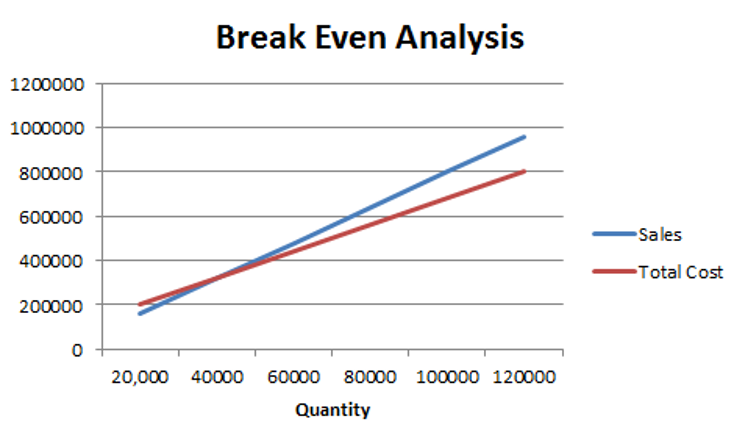Breakeven Analysis
For a firm, the breakeven point is the quantity of the sales required by the firm to cover its total cost, i.e., Total revenue = Total cost. At this quantity of sales the firm's net income is zero.
We know that:
F includes both fixed operating cost and fixed financing cost.
Breakeven quantity is the quantity where EBIT = 0. So, we solve for Q where EBIT = 0.
Example
Let's say we have the following data about a company:
Price per unit = $8
Variable costs = $6
Fixed operating costs = $20,000
Fixed financing costs = $60,000
The breakeven quantity will be calculated as follows:
The following graph summarizes the relationship between sales, costs, net income and net losses.

We can make the following observations from the above graph:
-
A firm with higher operating and financial leverage will have higher breakeven quantity.
-
Leverage magnifies the impact of change in sales on change in net income.
We can also modify the above formula to calculate the operating breakeven quantity:
In the above example, the operating breakeven quantity will be:


